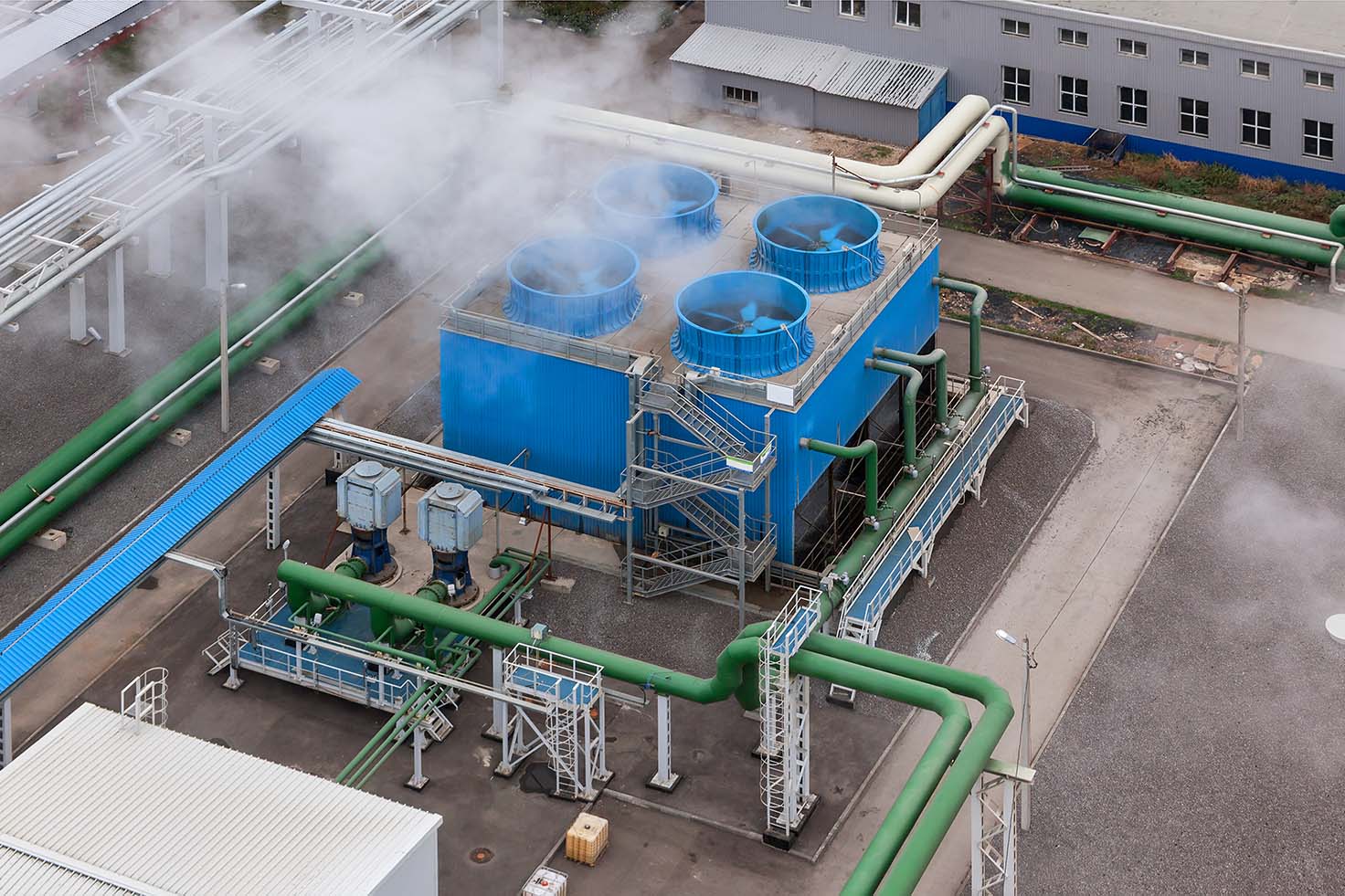Three Types of Heat Transfer Mechanisms in Cooling Towers

When discussing the different types of cooling towers, several variables come into play. Sometimes, towers are defined based on their build (package vs. field-erected). Other times, we classify towers by airflow generation (forced vs. natural draft). However, when talking about the different types of towers based on heat transfer mechanisms, there are three main categories – dry cooling, wet cooling, and fluid cooling. Companies rely on cooling towers in many different applications, big and small. What might work best in one application will not be ideal for another. It’s important to understand each of the heat transfer mechanisms to determine which tower type might be best suited for your next installation.
Dry Cooling Mechanisms
In dry cooling towers (also called closed recirculating systems), a heat exchanging device is used to absorb the cooling water and release it into the atmosphere – that device is generally a tube or series of tubes that contain coolant. Cooling occurs when heat transfers from the hot liquid within the tubes to the cooler air. The “dry” label comes into play not because no water is involved in the process, but because the cooling water is never exposed to air. Because of this, the unit loses very little water via evaporation.
Wet Cooling Mechanisms
Wet cooling towers (also called open-circuit systems) are most commonly used, especially in large applications like manufacturing facilities and power plants. Unlike dry cooling, the water in wet cooling towers makes direct contact with air flowing up the tower., using evaporation for cooling. A wet heat exchanger pumps water into the tower where it reaches the fill. A fill, or fill media, can look differently depending on the tower, but its main responsibility is to provide surface area for water to bounce off of, speeding up the evaporation process. While some water exits the tower in the form of drift, the rest of the water reaches the tower’s basin to then be recirculated into the system.
Fluid Cooling Mechanisms
Fluid cooling towers (also called closed-circuit systems) function similarly to wet cooling towers. There is one major difference. In a fluid system, warm water and the cool air meet within a coil, meaning there is no chance for that water to be exposed to the air outside. That air often contains contaminants, so exposure of the water to this air, even for a short time, presents an opportunity for those contaminants to enter the system. Fluid cooling towers eliminate that chance for contamination.
Which Cooling Mechanism is Best?
Cooling towers are a crucial component of many commercial HVAC systems and for good reason. These structures prevent machines from overheating while also eliminating the need for operators to dispel heat from those machines manually. Automating the cooling process with a cooling tower reduces the risk of overheating while also extending the lifespan of large pieces of equipment by reducing the strain on those components.
So, what type of cooling mechanism is best? Because of the complexity of cooling towers and the many factors to consider when designing or selecting one, there isn’t one correct answer. Each of the above-mentioned mechanism types has its advantages and disadvantages. For example, the minimal water loss in dry towers is appealing in areas where water isn’t plentiful. These towers also require less maintenance over time and there is no need for water treatment. However, these towers require more energy to function and have a greater overall footprint.
Wet cooling towers are widely available and in a large variety of sizes and configurations. These towers are also more energy-efficient and cost less to purchase. It’s no wonder why these towers are the most commonly installed. However, wet units come with the need for water treatment and frequent maintenance to ensure they continue to operate efficiently. Water treatment is not something owners can look over, as it is crucial for ensuring the safety of tower operators as well as others in the area. Outbreaks of diseases such as Legionnaires Disease have been linked to contaminated water within cooling towers, so preventative treatment is of utmost importance.
Because of the complex nature of cooling towers and the fact that every application is unique in scope, key decisions – such as the type of heat transfer mechanism to use – are best left to the experts. At Cooling Tower Experts, our team brings decades of industry experience and expertise regarding the latest cooling tower technologies. When recommending a tower, we take all factors into account, including capacity requirements, geographic location, and the intricacies of the existing system. With a full understanding of an owner’s need, we can then work through the various options to determine which size, type, and tower configuration would work best.
As mentioned above, even the most low-maintenance units require some level of ongoing upkeep. In addition to advising on the purchase and installation of a new tower, we also can develop a maintenance plan and/or offer training for operators to ensure that the new tower is properly cared for over the years so that its lifespan is extended as long as possible. If you’re looking to install a new tower or simply need help with maintaining an existing one, we encourage you to reach out!